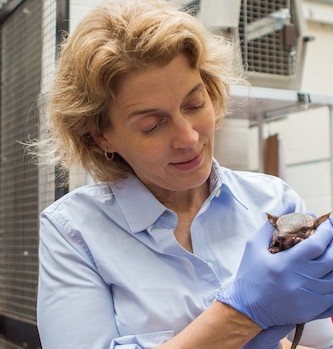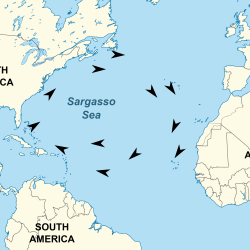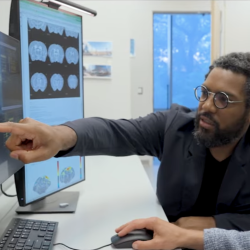Rhinos, Tigers and a Screaming Hairy Armadillo Named Sherman
National Zoo Director Brandie Smith (Ph.D. ’10) brings her animal adventures to UMD as 2023 CMNS Graduate Commencement Ceremony speaker.
Brandie Smith will always remember her first childhood encounter with a polar bear.
“I went on a trip with my family to the Pittsburgh Zoo, and I’ll never forget looking at the polar bears. I was like, ‘They’re so cool, but their fur is green, why is it green?’” she recalled. “I loved seeing them, but I also wanted to know more about them, and there was part of me that wanted to take care of these animals.”

In May, Smith will speak to graduate students and their families about her experiences as a Smithsonian director and a scientist at the University of Maryland College of Computer, Mathematical, and Natural Sciences’ (CMNS) 2023 Graduate Commencement Ceremony.
“I’m so honored,” Smith said. “My son happens to be a freshman at Maryland so I don’t know if it makes me a cool mom or not, but the fact that I was invited to come and speak at a graduation, it’s exciting for me and I think it might help my kids appreciate a little more the work that I do and the value that it has for the community.”
Cornfields, cows and carnivorous marsupials
Smith grew up surrounded by the cornfields of Indiana, Pennsylvania. While cows and chickens lived on the farm across the road, more exotic animals had already captured Smith’s attention by elementary school.
“My aunt was a stewardess, which I thought was such a glamorous profession because she got to travel all over the world,” Smith recalled. “She would send us books from the places she visited, and when I was about seven, she sent this big color book on Australian wildlife. Looking at these incredible, carnivorous marsupials and gliding mammals, I was obsessed, just blown away.”
Family visits to the Pittsburgh Zoo took Smith’s fascination with animals to a whole new level—sparking an interest in science and dreams much bigger than her small-town roots.
“Where I grew up, the idea of working in a zoo was something you’d never think about,” Smith explained. “It was like saying you wanted to be a ballerina or an astronaut. Sure, there were people who could do it, but it didn’t seem like a real career choice.”
By the time Smith was in college majoring in biology, she thought she was headed for a “sensible” career in medicine. She was all set for an internship with an ophthalmologist, when, on a whim, remembering her childhood experience of “meeting” the polar bears, she called the Pittsburgh Zoo.
“I said, ‘I’d love to work with animals, how did you get your job?’ And they connected me with the head of their conservation and research program and he said, ‘You know what, I’m on my way to pick my summer intern and you took the initiative to call me so I’m going to interview you now,’” Smith recalled. “I always tell people that if they want to succeed to be nice and work hard but also to take chances because at that moment I took a chance and my whole life changed.”
That internship gave Smith a whole new perspective on animals and conservation and what she could do to make a difference.
“I was fascinated with the idea that there are species on this planet that exist only because of zoos—that there were animals that were extinct in the wild but because zoos had them and bred them, they continued to exist, and could be reintroduced,” she explained. “I got interested in the whole science of population genetics, how we can manage these endangered species.”
Smith went on to Clemson, snagging an internship along the way at the Smithsonian Conservation Biology Institute in Front Royal, Virginia, before getting her master’s degree in zoology in 1997. But even with a master’s degree, finding a full-time job at a zoo was difficult at best. After months of living in her sister’s basement in Boston, waitressing at night and volunteering at Zoo New England during the day, Smith landed a part-time, temporary, minimum-wage position at the Dallas Zoo.
Falling in love—with rhinos, oryx and bongo
“I ended up being a rhino keeper,” Smith recalled. “I worked with assorted ungulates, including rhinos, oryx, bongo and Eld’s deer, and I just fell in love with the profession.”
A research presentation at a zoo conference led to Smith’s next opportunity as a conservation biologist for the Silver Spring, Maryland-based Association of Zoos and Aquariums (AZA). Smith moved from Dallas to Maryland, and while she shared her scientific expertise with zoos around the country in her role with AZA“Working in the science of small population genetics, I knew there was no place that was better than Maryland, and I really loved it,” Smith recalled. “I was supported by an incredible community of people who wanted me to succeed.”
Doing “something impossible”
By the time Smith finished her Ph.D. in 2010, she had gotten married, had two kids and, because she missed working with animals, left AZA to become curator at the National Zoo. In the years since, as Smith moved up to associate director of animal care sciences, then deputy director and now zoo director, she has been recognized for her work advancing breeding programs and working to save endangered animals, from giant pandas to amphibians to Asian elephants. She also made it a priority to support the people the animals depend on most—zoo employees who take on the big challenges of conservation every day.
“The other day we inseminated a tiger. Here’s an endangered species, its numbers are drastically dropping in the wild, and we need to make more. Although we can’t yet successfully produce tiger cubs from artificial insemination, we came to work the other day and said, ‘Let’s do something impossible,’” Smith explained. “We’re creating the science to help save an endangered species.’”
Only the second woman to be named director in the zoo’s 132-year history, Smith still likes to get to know all the animals and the people who care for them.
“My kids get mad at me because I can’t remember the names of their friends, yet I’ve got a list of hundreds of keepers and thousands of animals in my head,” Smith noted. “I can tell you about Ronin the sea lion I met last week, but then my daughter will say something about someone on her basketball team and I’ll be like ‘Who’s that again? Remind me who that is.’”
It’s no secret that Smith loves what she does—and can’t imagine herself anywhere else.
“I love being with the animals. If you have a rough day and then go down to the small mammal house and hang out with Sherman, the screaming hairy armadillo, it makes your whole world better,” Smith explained. “So, the fact that I can do things like that makes me happy.”
Looking back, Smith is proud of her accomplishments and grateful for the people who have supported her along the way. For her, speaking at this year’s CMNS Graduate Commencement Ceremony will be a welcome opportunity to say thank you to a place that’s meant so much to her and her career.
“The opportunity to come back and try to give back a little bit is what’s exciting for me,” Smith said. “I am where I am because I went to the University of Maryland, because I got that degree and people believed in me. Everything I learned and who I became was part of that process, and I couldn’t be more grateful.”







